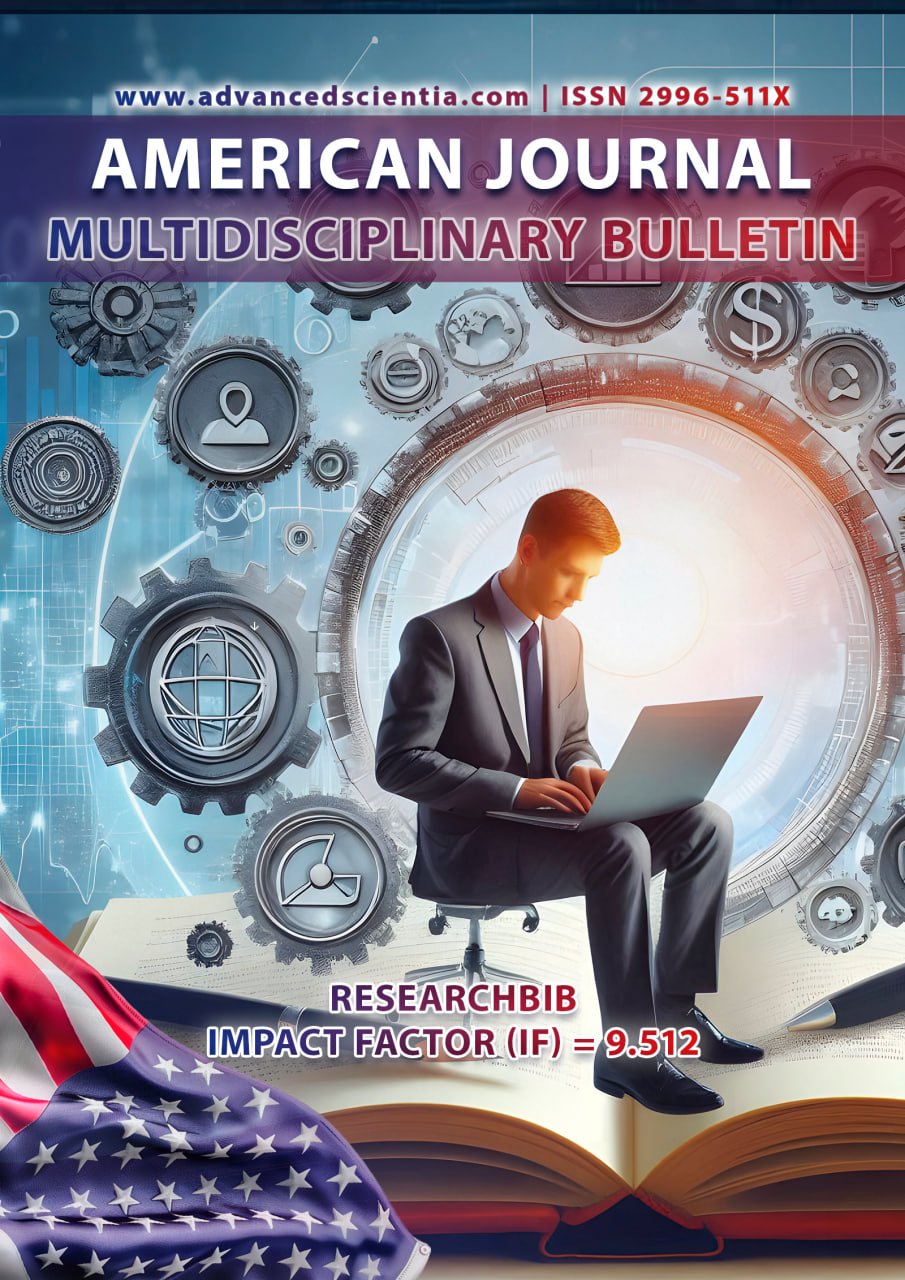UZBEKISTAN’S TRADE INTEGRATION WITH CENTRAL ASIAN COUNTRIES IN THE POST-PANDEMIC PERIOD: THROUGH THE LIBERALISM PERSPECTIVE
Abstract
This study investigates the influence of liberalist principles on Uzbekistan’s post-pandemic trade integration within Central Asia, analyzing how economic interdependence, free trade, and cooperative frameworks have shaped regional recovery and growth. Amid the disruptions caused by COVID-19, Uzbekistan—the region’s most populous and geopolitically pivotal state—prioritized revitalizing regional trade to address its landlocked challenges and foster economic stability. Under President Shavkat Mirziyoyev’s liberalization agenda, the country pursued reforms aimed at modernizing its economy and strengthening ties with neighboring states. Drawing on liberalism theory, this research evaluates the extent to which liberal economic policies have driven Uzbekistan’s post-pandemic trade strategies and their implications for regional cooperation. Through qualitative analysis of academic literature, government reports, trade statistics, and case studies, the paper assesses the alignment of Uzbekistan’s policies with liberalist ideals, such as reducing trade barriers and institutionalizing multilateral cooperation. Findings suggest that while liberal frameworks have facilitated enhanced regional trade integration, persistent infrastructural deficits, uneven development, and political tensions complicate full realization of mutual gains. The study contributes to debates on liberalism’s efficacy in post-crisis regional integration, offering insights for policymakers navigating the interplay of economic modernization, political stability, and collective prosperity in Central Asia.
References
1. Asian Development Bank. (2020). Regional: Central Asia Regional Economic Cooperation: Knowledge Sharing and Services in Transport and Transport Facilitation. https://www.adb.org/projects/48335-001/main
2. Asian Development Bank. (2021). Uzbekistan: Modernizing Trade Policies for Regional Integration. https://www.adb.org/sites/default/files/publication/27811/uzb-2021.pdf
3. CAREC. (2021). The Central Asia Regional Economic Cooperation (CAREC) Program Development Effectiveness Review 2020. https://www.carecprogram.org/uploads/MC-2021-Docs-3-CAREC-2030-Development-Effectiveness-Report-20211711-EN.pdf
4. European Bank for Reconstruction and Development. (2024). The Central Asia link. https://www.ebrd.com/news/2024/the-central-asia-link.html
5. Global Finance Magazine. (2024). Central Asia's fastest growing and most diversified economy is being radically changed by reforms, rising FDI and high growth. https://gfmag.com/economics-policy-regulation/uzbekistan-minister-laziz-kudratov-on-countrys-sweeping-economic-makeover/
6. Nayyar, M. (2022). Asian Development Bank, Asian Economic Integration Report 2022: Advancing Digital Services Trade in Asia and the Pacific [Book Review]. SAGE Publications, 26(3), 16846221107416. https://journals.sagepub.com/doi/abs/10.1177/26316846221107416
7. OECD. (2021). Beyond COVID-19: Prospects for Economic Recovery in Central Asia. https://www.oecd.org/content/dam/oecd/en/publications/reports/2021/10/beyond-covid-19-prospects-for-economic-recovery-in-central-asia_67d1440c/03882e7b-en.pdf
8. OECD. (2023). Trade Facilitation in Central Asia. https://www.oecd.org/content/dam/oecd/en/publications/reports/2023/12/trade-facilitation-in-central-asia_93190ff4/80ed999c-en.pdf
9. Ruziev, K. (2021). Uzbekistan's Development Experiment: An Assessment of Karimov's Economic Legacy. Europe-Asia Studies, 73(7), 1303-1329. https://doi.org/10.1080/09668136.2021.1919602
10. United Nations. (2023). Central Asia Zone of Peace 'a Shining Example of Multilateralism', Delegate Tells General Assembly. https://press.un.org/en/2023/ga12501.doc.htm
11. USAID. (2023). The USAID CASA-1000 Secretariat Activity Fact Sheet. https://www.usaid.gov/sites/default/files/2022-05/20211122_CASA-1000_Fact_Sheet.pdf
12. U.S. Department of State. (2024). 2024 Investment Climate Statements: Uzbekistan. https://www.state.gov/reports/2024-investment-climate-statements/uzbekistan/
13. World Bank. (2020). South Caucasus and Central Asia: The Belt and Road Initiative Uzbekistan Country Case Study. https://openknowledge.worldbank.org/server/api/core/bitstreams/7b901f03-d114-54de-a13b-6012a28f7934/content
14. World Bank. (2023). Regional Cooperation Reduces Poverty and Builds Resilience in Central Asia. https://www.worldbank.org/en/results/2023/12/06/regional-cooperation-reduces-poverty-and-builds-resilience-in-central-asia
15. World Bank. (2024). Helping Uzbekistan Undertake a Historic Social and Economic Transformation. https://www.worldbank.org/en/results/2024/07/16/helping-uzbekistan-undertake-a-historic-social-and-economic-transformation
16. Global Finance Magazine. (2024). Central Asia’s fastest growing and most diversified economy is being radically changed by reforms, rising FDI and high growth. Global Finance spoke with Laziz Kudratov, Uzbekistan’s Minister of Investment, Industry and Trade. Retrieved from https://gfmag.com/economics-policy-regulation/uzbekistan-minister-laziz-kudratov-on-countrys-sweeping-economic-makeover/
17. BISI (2024). Uzbekistan pushes for Economic Reforms in a Bid to join World Trade Organisation. Retrieved from https://bisi.org.uk/reports/uzbekistan-pushes-for-economic-reforms-in-a-bid-to-join-wto
18. DGAP (2024). Central Asia’s Shifting Regional Dynamics. Retrieved from https://dgap.org/en/research/publications/central-asias-shifting-regional-dynamics






















